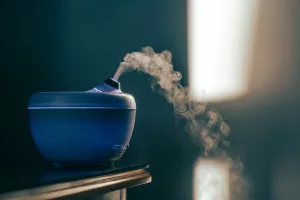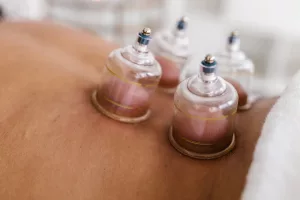Achieving a dazzling smile doesn’t have to involve expensive dental procedures. Over time, our teeth can lose their sparkle due to habits like smoking, or enjoying sodas, coffee, and other staining foods. Let’s face it, nobody’s aiming for yellow or brown teeth. But brushing alone sometimes feels like bringing a knife to a gunfight. And those teeth whitening kits on the market? They can be pricey and don’t always live up to their promises. Luckily, nature’s got our back with some nifty natural solutions for teeth whitening.
The Power of Baking Soda and Lemon
Using baking soda and lemon is like calling in the natural cavalry for teeth whitening. Baking soda, or sodium bicarbonate, is a gentle abrasive that can help scrub away surface stains. It’s a natural substance, found in deposits around the world, and shouldn’t be confused with its harsher chemical cousins like caustic soda. Meanwhile, lemon juice, with its natural acidity, works like a charm to dissolve plaque and fight tartar formation. Plus, it can keep your breath fresh and your gums happy.
How to Use Baking Soda and Lemon Safely
- Prepare the Mixture:
- Put 1 teaspoon of baking soda in a bowl.
- Add a few drops of organic lemon juice.
- Mix until you have a paste.
- Application:
- Use a piece of paper towel to apply the mix to your teeth.
- Leave it on for a maximum of 1 to 2 minutes.
- Rinse thoroughly with water.
Remember, moderation is key. Overdoing it can harm your enamel due to the mixture’s acidity. Stick to using this remedy once or twice a month.
Baking Soda and Lemon: A Deeper Dive
While the combination of baking soda and lemon is celebrated for its whitening prowess, it’s crucial to understand the science behind it. Baking soda is alkaline, which means it can help neutralize acids in the mouth, creating an environment less favorable for bacteria that cause decay. Meanwhile, lemon juice’s citric acid serves as a natural bleaching agent, helping to break down stains. However, the acidity of lemon can be a double-edged sword; it’s effective at dissolving stains but can erode enamel if used too frequently. Therefore, balance is vital.
Baking Soda and Hydrogen Peroxide
Hydrogen peroxide is not just for cleaning cuts; it can also be a secret weapon for whitening teeth. It’s an oxidizing agent that helps remove stains, but it’s potent, so you’ll want to handle it with care.
Step-by-Step Guide to Using Hydrogen Peroxide
- Create the Paste:
- Combine 1 teaspoon of baking soda with a few drops of hydrogen peroxide.
- Mix into a paste.
- Brush Carefully:
- Dip your toothbrush into the mixture.
- Brush your teeth for no more than 2 minutes.
- Rinse your mouth thoroughly.
Start with once-a-week applications until you see results. Then, reduce usage to once a month to maintain your new bright smile.
Understanding Hydrogen Peroxide’s Role
Hydrogen peroxide acts as a bleaching agent due to its ability to release free radicals. This action helps break down the color-causing compounds on teeth. While it’s effective, using it at high concentrations or too frequently can increase tooth sensitivity. Thus, it’s recommended to use a lower concentration and monitor how your teeth feel after use. If sensitivity occurs, consider reducing the frequency or mixing with additional baking soda to buffer the strength.
The Magic of Natural Charcoal
Activated charcoal, often made from coconut shells or wood, is a natural way to lift stains from your teeth. It’s known for its absorbent properties, which can help remove the compounds that cause staining.
Using Charcoal for Teeth Whitening
- Simple Application:
- Add a small amount of charcoal powder to your regular toothpaste.
- Alternatively, dip a damp cotton swab into charcoal powder and apply it to your teeth.
- Rinse thoroughly.
Initially, use this method twice a week, but once you achieve the desired whiteness, scale back to once a week.
Charcoal: Beyond the Basics
The science behind charcoal’s effectiveness lies in its ability to bind with tannins, which are compounds found in many common stains like coffee, tea, and wine. While using activated charcoal, it’s essential to use a soft-bristled toothbrush to prevent abrasion to your enamel. Moreover, ensure you’re using a food-grade activated charcoal to avoid any impurities that can harm your health.
Harnessing the Power of Sea Salt
Sea salt, with its antiseptic properties, can be a gentle exfoliant for your teeth. Its iodine content helps cleanse and brighten your smile.
Steps to Use Sea Salt
- Create a Sea Salt Rinse:
- Mix coarse sea salt with lukewarm water.
- Dip your toothbrush into the mixture and brush.
Use this method 2-3 times a week to see a noticeable difference in your teeth’s appearance.
Sea Salt: A Natural Exfoliant
Sea salt is not only a natural abrasive but also helps in maintaining the pH balance of your mouth, reducing the risk of bacterial growth. When using sea salt, opt for non-iodized versions to minimize the risk of excess iodine intake, which can have health implications. Using sea salt in combination with regular oral hygiene practices can enhance its benefits.
Foods That Help Keep Teeth White
Your diet plays a crucial role in maintaining a bright smile. Some foods can help clean your teeth while you eat them.
- Broccoli, Lettuce, Spinach: These veggies form a protective film on your teeth, helping to prevent stains.
- Celery, Carrots, Cauliflower, Cucumbers, Pears: These crunchy foods act like natural toothbrushes, scrubbing your teeth clean.
- Cheeses: Rich in calcium and phosphorus, cheese helps remineralize enamel and neutralize acids.
The Science of Crunchy Foods
Crunchy vegetables and fruits stimulate saliva production, which naturally cleanses the mouth and washes away food particles. The fibrous texture of these foods also acts as a gentle scrub, helping to physically remove surface stains.
Foods to Avoid for Whiter Teeth
While some foods help, others hinder your quest for a radiant smile. These are the usual suspects that can stain your teeth over time:
- Colored Drinks: Tea, coffee, sodas, and red wine.
- Dark Juices: Cranberry, pomegranate, and similar fruit juices.
- Intensely Colored Foods: Beetroot, berries, and sauces like curry and soy.
However, don’t cut out nutrient-rich foods entirely. Instead, balance your diet, perhaps by following these with some of the crunchy, teeth-cleaning foods mentioned earlier.
Choosing Wisely: Tips for Minimizing Stains
When consuming stain-prone beverages, consider using a straw to limit exposure to your teeth. Additionally, rinsing your mouth with water after consuming such foods can help mitigate their staining effects. If possible, brush your teeth about 30 minutes after eating or drinking to help maintain your teeth’s natural whiteness.
Additional Natural Remedies
Oil Pulling with Coconut Oil
Oil pulling is an ancient Ayurvedic practice that involves swishing oil in your mouth to remove toxins and improve oral health. Coconut oil is particularly effective due to its lauric acid content, which reduces inflammation and bacteria.
- How to Oil Pull:
- Take a tablespoon of coconut oil.
- Swish it around in your mouth for 15-20 minutes.
- Spit it out (preferably into a trash can, as the oil can solidify in pipes).
Oil pulling can be done a few times a week for best results.
Why Coconut Oil?
Lauric acid in coconut oil has antimicrobial properties that can help reduce harmful bacteria in the mouth. This reduction not only helps in whitening teeth but also improves overall oral hygiene. Regular oil pulling can lead to fresher breath and healthier gums, complementing your teeth whitening efforts.
Apple Cider Vinegar Rinse
Apple cider vinegar is another natural disinfectant that can help whiten teeth. Its acidic nature helps break down plaque and remove stains.
- ACV Rinse Steps:
- Dilute apple cider vinegar with water (1 part ACV to 2 parts water).
- Swish the solution in your mouth for a couple of minutes.
- Rinse with plain water afterward.
Limit this practice to a few times a week to prevent enamel erosion.
Apple Cider Vinegar: Use with Caution
While apple cider vinegar is potent, its acidity means it should be used sparingly. Always dilute it before use to minimize enamel wear. It’s also wise to wait at least 30 minutes before brushing your teeth after using an ACV rinse to allow your enamel to re-harden.
Common Mistakes to Avoid
- Overusing Abrasive Ingredients: More isn’t always better. Overuse of abrasive substances like baking soda can wear down enamel.
- Neglecting Professional Advice: While natural methods can be effective, it’s always wise to consult with a dentist before starting any new oral health regimen.
- Ignoring Underlying Issues: Stained teeth can sometimes be a sign of deeper dental issues. Ensure regular dental check-ups.
The Importance of Professional Guidance
Dentists can provide insights into the cause of discoloration, as sometimes it may be due to genetic factors or underlying health issues. They can recommend the best course of action tailored to your specific needs and health history.
Maintaining Your Results
Once you’ve achieved your desired level of whiteness, maintaining it is key. Here are some ongoing tips:
- Regular Brushing and Flossing: Stick to brushing twice a day and flossing regularly to maintain oral hygiene.
- Use a Straw: When drinking stain-prone beverages, use a straw to minimize contact with your teeth.
- Rinse Your Mouth: After consuming staining foods or drinks, rinse your mouth with water to help wash away potential stains.
Long-term Strategies for a Bright Smile
In addition to these practices, consider using a whitening toothpaste with gentle polishing agents to maintain brightness. Regular dental cleanings and check-ups can also help keep your teeth looking their best, as professionals can remove buildup that home-care might miss.
By incorporating these natural teeth whitening methods and maintenance tips, you can save money and keep your smile bright without stepping foot in a dentist’s office every time you seek a whiter smile. Embrace nature’s bounty, and let your smile shine bright!



